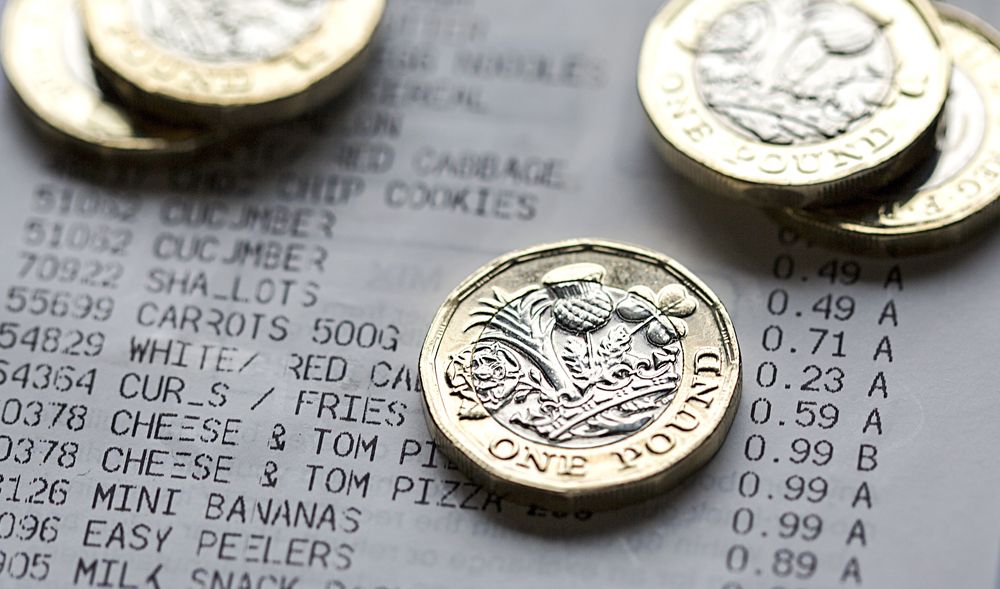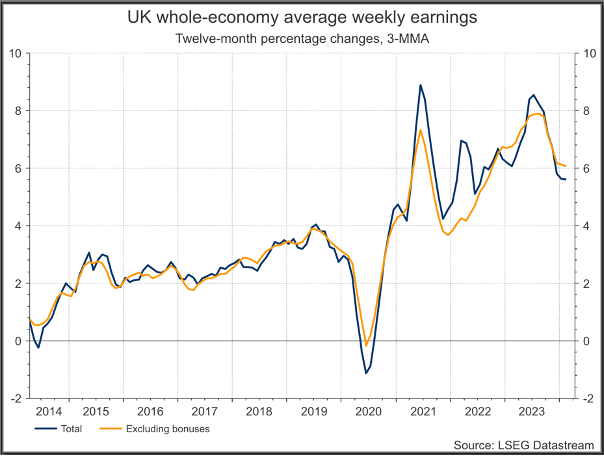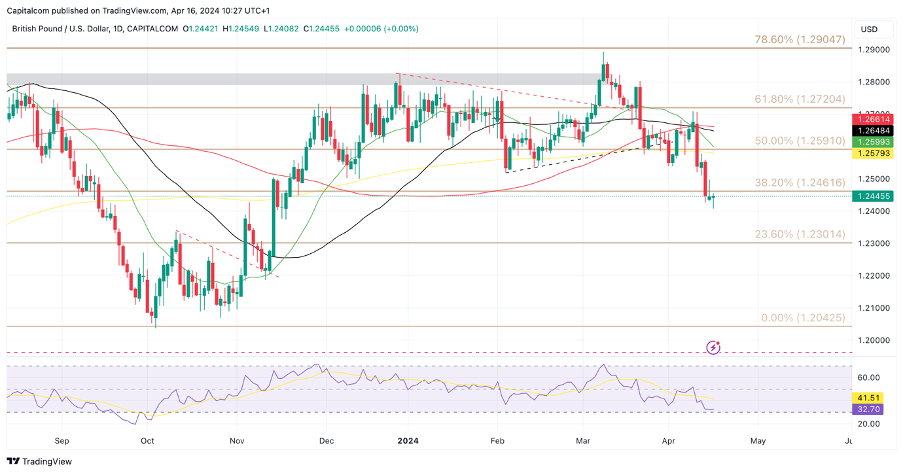GBP Latest: UK wages continue to rise, focus on CPI and rate cuts
UK wage growth remains strong but unemployment rises
The latest employment data in the UK released on Tuesday morning showed that wage growth was stronger than expected in the three months to February. Average earnings including bonuses rose 5.6% in the period measures, when markets were anticipating a rise of 5.5%. When removing bonuses, wages grew 6% in the three months to February, the smallest rise in the last year-and-a-half. This data was accompanied by a higher-than-expected unemployment rate, which rose back up to 4.2%.

The combination of higher unemployment alongside the higher wage growth reading has likely calmed investor concerns regarding a slowing disinflation process. Without a clear weakening in activity in the labour market the stronger wages data would have resembled what is happening in the US. That said, the prospects of rate cuts from the Bank of England before autumn also look questionable.
The pound fell against the US dollar and Euro immediately after the data was released but both pairs have since recovered. Last week, GBP/USD saw its worst weekly performance since July last year as the escalation of the conflict in the Middle East saw investors flocking to safe-haven assets. The US dollar had already been recovering some bullish momentum on the back of continued stronger-than-expected economic data in the US. For now, the path of least resistance in GBP/USD seems to be set lower with immediate support at the 1.24 mark.
GBP/USD daily chart
 Past performance is not a reliable indicator of future results.
Past performance is not a reliable indicator of future results.
The March inflation reading will be released on Wednesday morning, another key figure markets will be watching out for. Consumer prices are expected to have risen 3.1% in the year to March, a drop from the 3.4% seen in February. If confirmed, this would be the smallest yearly rise since September 2021. Core CPI is also expected to have dropped from 4.5% to 4.1%. Whilst the softer readings are gladly welcomed, the data remains above the long-term 2% target set by the Bank of England which suggests there is still work to be done to ensure stability in consumer prices. Markets are doubtful that the central bank will move to cut rates until it is sure that inflationary pressures have eased enough, which raises doubts about a rate cut in the first half of the year. Current pricing shows a 35% chance of a 25bps cut in June.
Deviations from what is expected from the CPI release on Wednesday could see an uptick in volatility in GBP. A stronger reading would push back on expectations of a June rate cut, potentially allowing GBP/USD to recover some bullish momentum – that is if the risk-off sentiment stemming from geopolitical risks does not intensify. Alternatively, a weaker inflation reading could see GBP/USD dip below 1.24 as the rate differential would favour the USD over GBP.